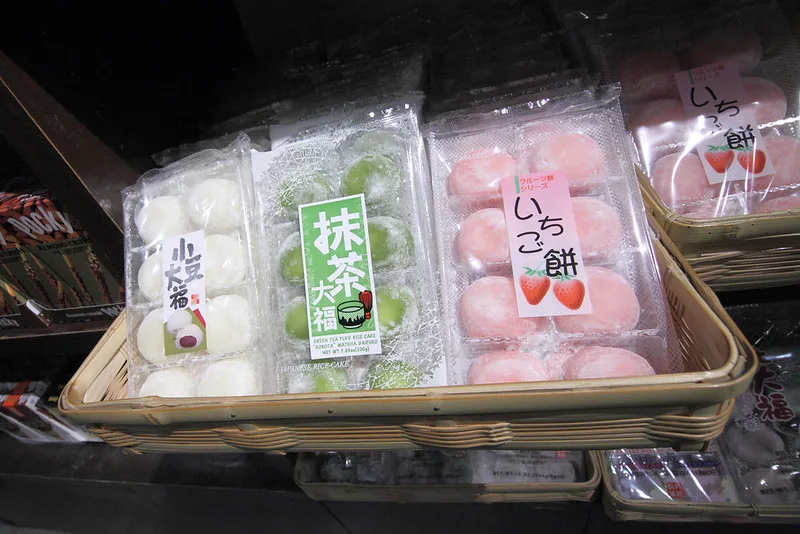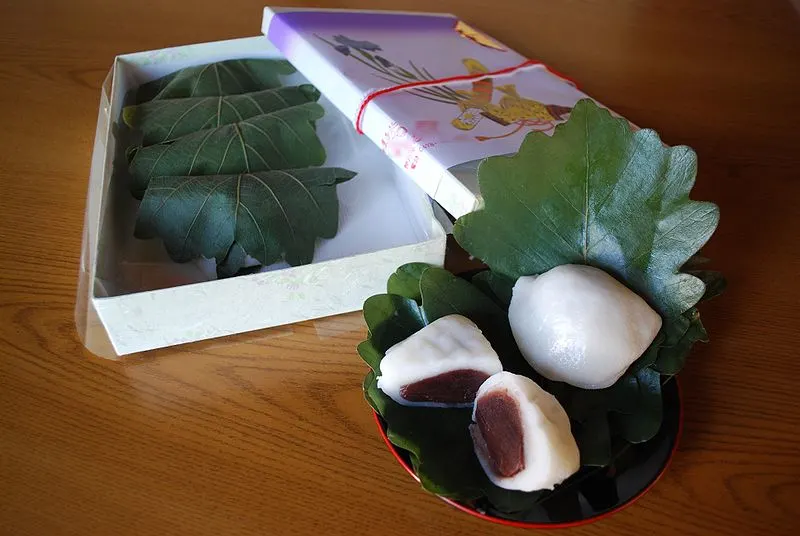INSIDE: The Complete Everything you need to know Guide to Japanese Supermarkets in Japan. Updated 2024.
High on my list of must-do activities when we travel is to visit a local supermarket.
It may not be the first thing that comes to mind when you planning a family vacation, but there are a few reasons to add this family travel adventure to your own travel itinerary.
Of all the supermarkets in the world, Japanese supermarkets are the one we love best.
A Japanese supermarket is truly something special.
Here’s why:

Disclosure: This article, written by a human (me), without AI input, may contain affiliate links. If you make a purchase after clicking on one of these links, we may receive a small commission at NO COST to you. For our Disclosure and Disclaimer statements, and an explanation of our Advertising policy please click here
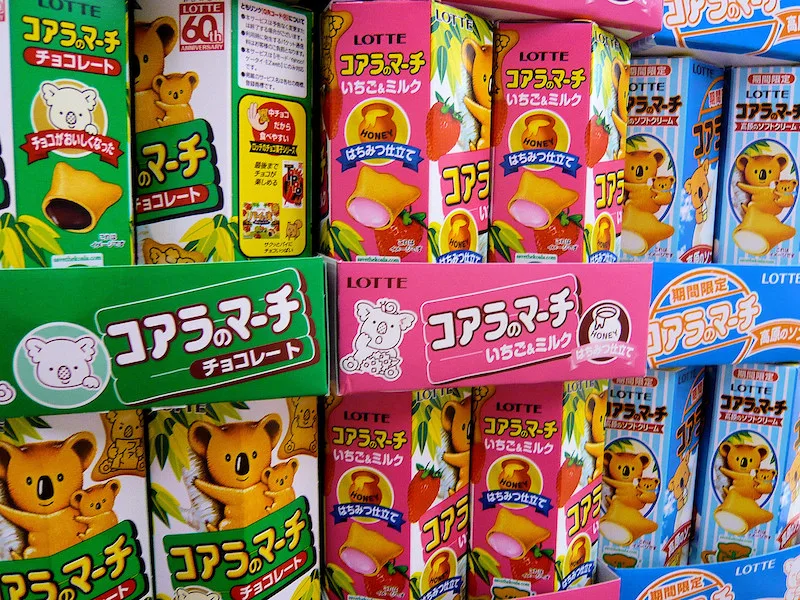
WHY JAPANESE SUPERMARKETS ARE THE BEST SUPERMARKETS IN THE WORLD!
When visiting a Japanese supermarket, the kids love to explore the candy aisle (this is where we find all the best candies in Japan!).
But you can find Roam the Gnome and I scouring the Japanese food products shelves for locally made sauces, pastes, seasoning, curry mixes and the best Japanese pantry supplies, and rice we can use to replicate our favourite meals and Tokyo streetfood finds when we get home.
RELATED: Monster Guide to the Best Japanese Souvenirs and Gifts
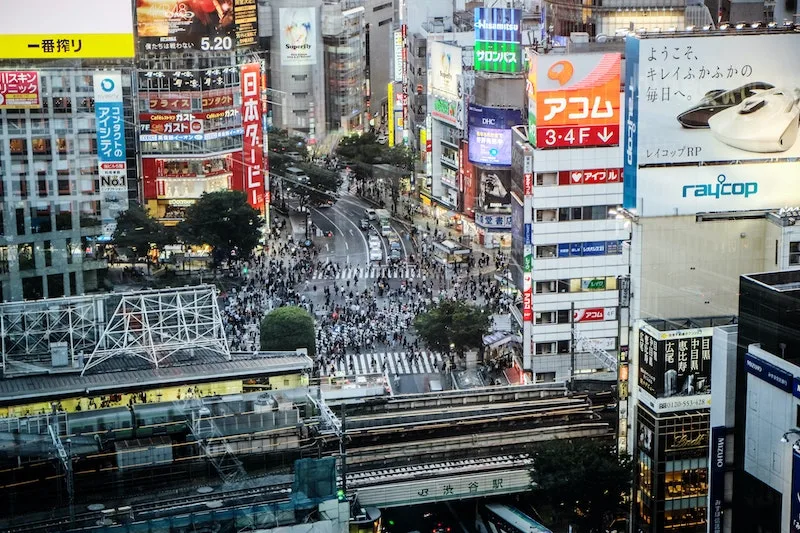
Image credit: Daryan Shamkhali via Unsplash
Three Reasons to Visit Grocery Stores When You Travel
Correct at time of publication on Roam the Gnome. Please check with venue for updates. We apologise in advance if there have been any changes we are unaware of. All prices in yen, unless otherwise stated
1. A local supermarket can help you save money when you travel.
We stock up on all the snacks and crackers, buy readymade meals for breakfast and lunch, buy fruit to take with us on our day trips, and buy the odd drink too.
2. It’s the best place to buy food souvenirs for our family and friends.
Foodie friends love a unusual bottle of sauce or local seasoning, kids love to try new types of candy, and bars of chocolate don’t last long.
In fact, I’ve never met someone who doesn’t appreciate a gift of food from our travels.
3. Supermarkets give travelers an insight into neighbourhood life and a chance to hang out with the locals.
Visiting a supermarket is a guaranteed way to avoid the tourists but it’s also the best adventure for all of us.
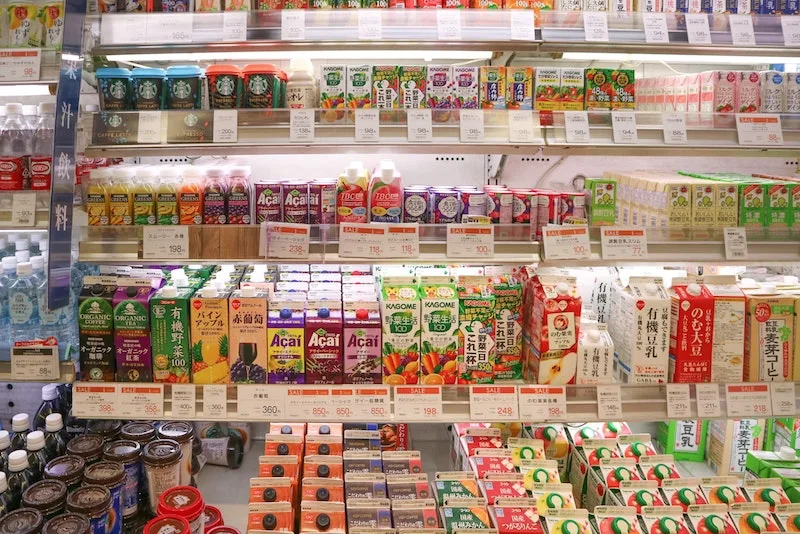
Image credit: Joan Tran via Unsplash
A Basic Guide to Japanese Supermarkets in Japan
A Japanese food supermarket is unique in that all the Japanese staff take pride in ensuring the whole Japanese grocery store is:
- orderly
- uncluttered
- neat and tidy
- properly stocked
- well kept, with products in their right place.
Stock levels are replenished during the day and staff do their best to be discreet, without getting in your way.
One of the first things we do when we arrive is check the “SALE” sections.
They are often near the front of the store, or in the refrigerated sections.
This is an acceptable practice in Japan.
Popular Japanese supermarkets have a steady rotation of customers all throughout the day.
Everyone is looking for the freshest food possible, and any food that has been sitting untouched for a few hours is quickly marked down in preparation for the next lot of freshly made Japanese food to arrive.
This practice is a win for family travelers to Japan who adventure on a budget.
Visit a supermarket about an hour or two before it closes, and you’ll find a shrinking stack of ready-made bento boxes just waiting for you with price discounts between 50 – 75%.
The supermarkets can’t sell this food the next day, so take advantage of the low price.
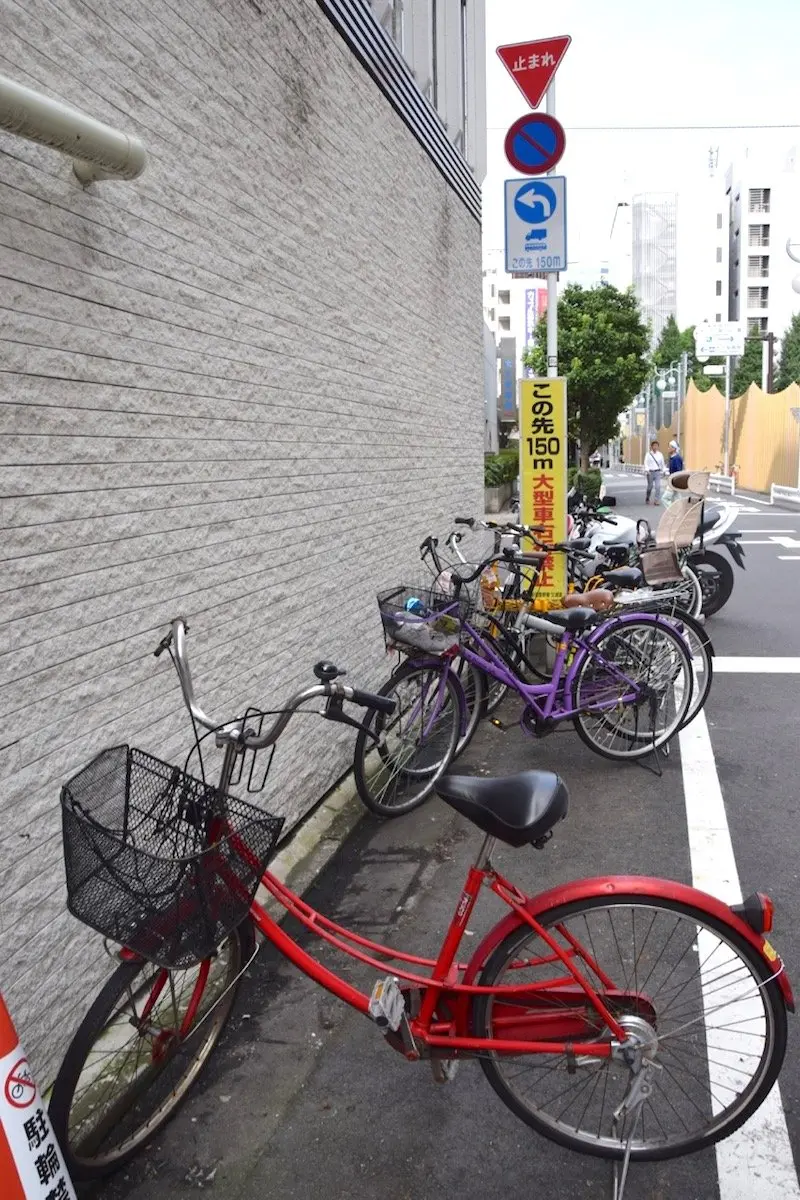
How to get to a Japanese Supermarket?
Japanese public transport & bicycles
Most Japanese supermarkets are near public transport, and they always have plenty of bicycle parking.
Do take your own shopping bags, so you don’t have to pay for plastic bags.
Fun fact: The word for supermarket in Japanese is supamaketto! Sound it out.
(It’s an english word, written in “katakana”)
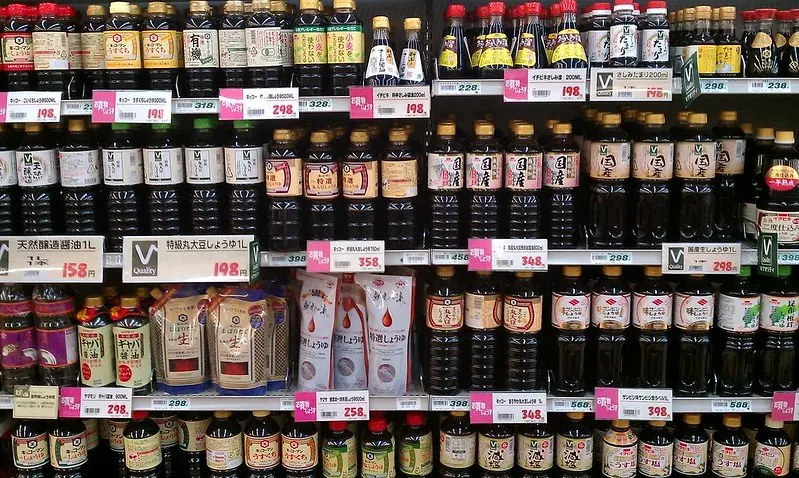
Image credit: Yuya Tamai via Flickr CC BY -2.0
When does a Japanese supermarket open?
Most Japanese supermarkets open around 10am (Japanese shops are late starters), and close around 9 or 10pm at night.
A big Japanese supermarket in Tokyo might stay open until midnight every day.
It all depends on the location and the foot traffic.
Seiyu is open 24 hours a day.
Book Now: Try all the best local food on this 3 hour Japan Foodie Tour of Sugamo Tokyo
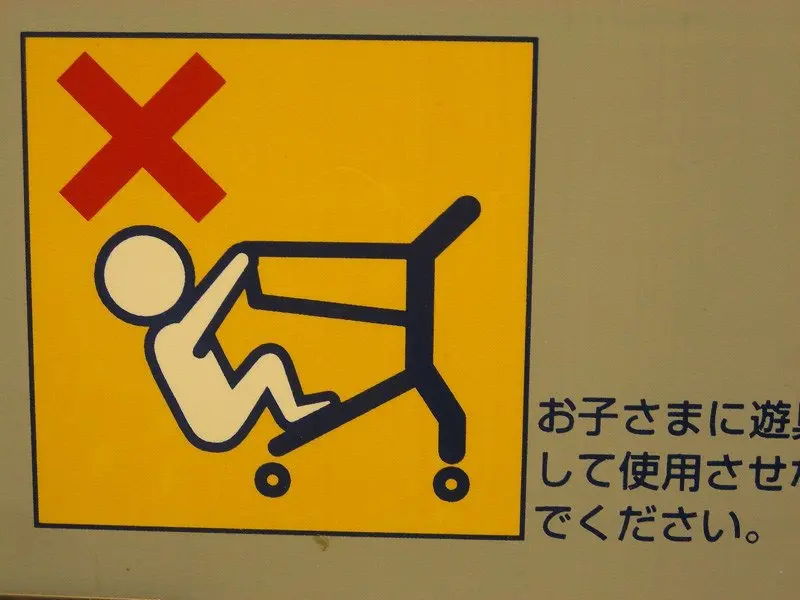
Image credit: Antverena via Flickr CC BY -SA 2.0
A note on Japanese shopping carts
You’ll notice that the Japanese shopping carts can be remarkably different to the ones at home.
Japanese people in both city and country areas of Japan tend to shop small and shop often to ensure the food they purchase is super fresh, and that they can carry it home.
This means they don’t need monstrous sized shopping trolleys.
The Japanese shopping carts are built on a smaller frame.
Sometimes they take one medium sized shopping basket.
Others are double decker sized, with space for two shopping baskets.
It’s also not uncommon to need a 100 yen coin to unlock the cart.
(You collect your coin back when you return it.)
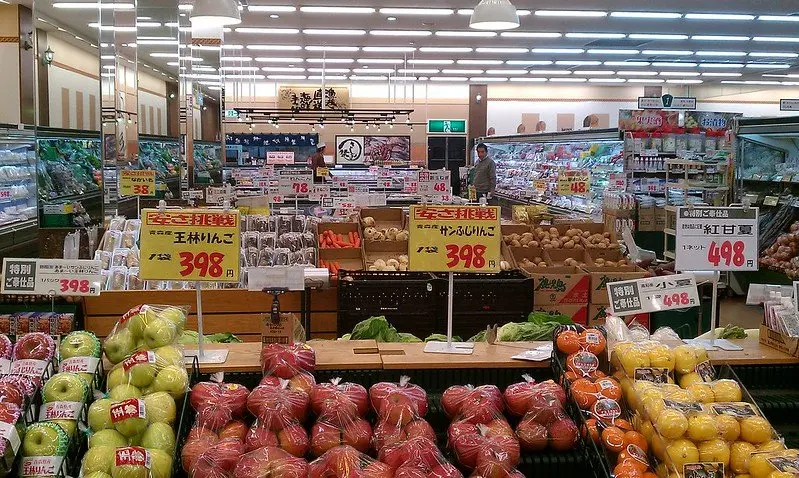
Image credit: Yuya Tamai via Flickr CC BY -2.0
Grocery Shopping in Japan inside a Japanese Food Store
- What are Japanese supermarkets like?
- Why are vegetables and fruits so expensive in Japan?
- What ready to eat vegetarian food can I buy in a supermarket in Tokyo?
- What time do the supermarkets open in Japan?
- What is the biggest supermarket in Japan? (Ito Yokado is your answer!)
These are some of the questions people ask about Japanese supermarkets in Japan.
We’ll try to answer them all.
BOOK NOW: Old Town Tokyo Food Tour
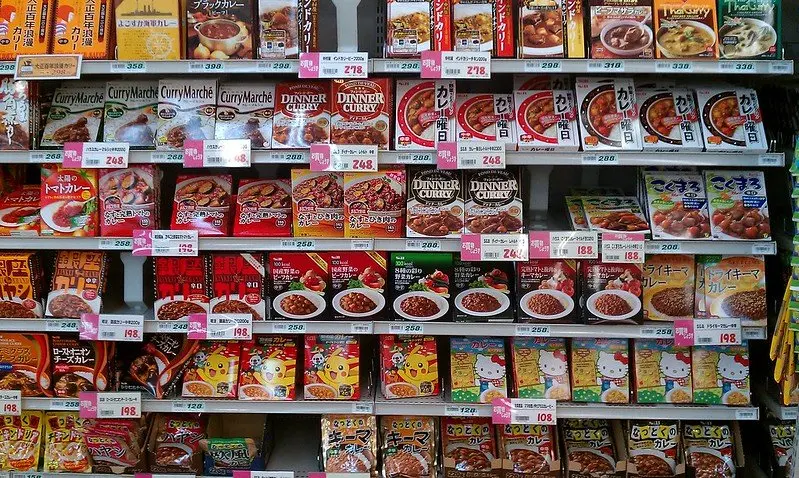
Image credit: Yuya Tamai via Flickr CC BY -2.0
WHAT CAN YOU BUY IN A JAPANESE SUPERMARKET?
Japanese grocery stores in Japan are similar in look and layout to supermarkets in Australia, the UK and America.
There’s all the aisles filled with Japanese pantry staples like:
- Japanese curry pastes
- Japanese soy sauces
- Japanese seasonings
- Japanese salad dressings, and more.
BUT, the biggest difference is that a Japanese supermarket has a MUCH BIGGER FOOTPRINT of space saved for freshly prepared Japanese hot food including authentic bento boxes, and Japanese ready to eat meals.
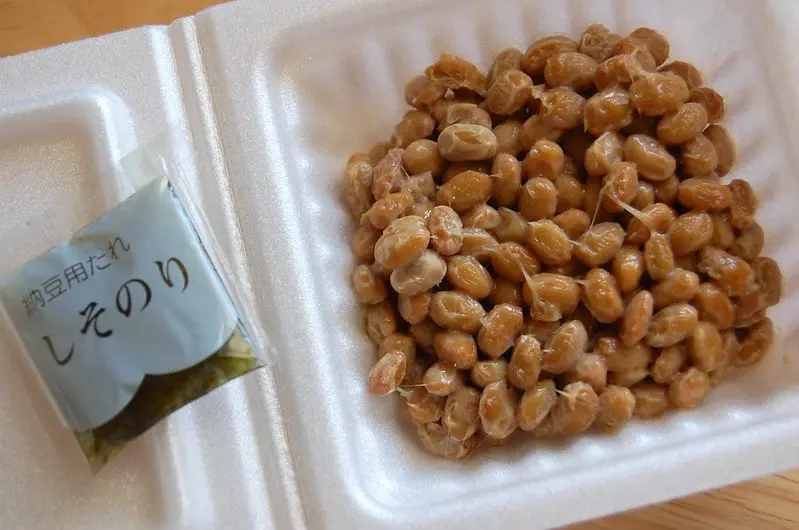
Image credit: Snowpea&Bokchoi via Flickr CC BY -2.0
Hot tip: Navigate the Grocery Aisles in a Japanese Food Store
When we visit a new supermarket Japan style, we start at one end of the shop near the entrance, and work our way up and down all the aisles so we don’t miss anything.
A Japanese market layout will include a fridge section for tofu, and that much-loved Japanese favourite, fermented soy beans – commonly known as Japanese natto, pictured above
Try it at least once.
(But do remember, there’s NO obligation to try it a second time!)
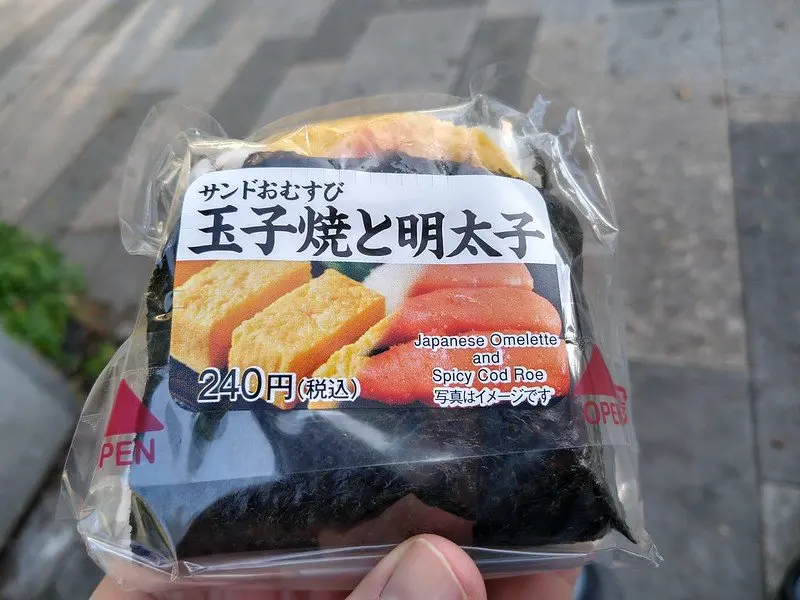
Image credit: Bob Walker via Flickr CC BY -SA 2.0
No.1: Japanese supermarket bento boxes
They stock ready-to-eat bento meals.
What is in a traditional Japanese bento box?
At a Japanese food store, you’ll find boxes filled with a mix of:
- Hot (and cold) udon noodles, tendon, and soba noodle dishes
- Japanese fried chicken (kaarage)
- Japanese curry
- Vegetable tempura
- Regional dishes of Japan
- Japanese rice dishes
- Supermarket sushi
There’s always some kind of side salad or side dish included (see below for potential choices), Japanese pickles, and maybe a sweet treat of some kind.
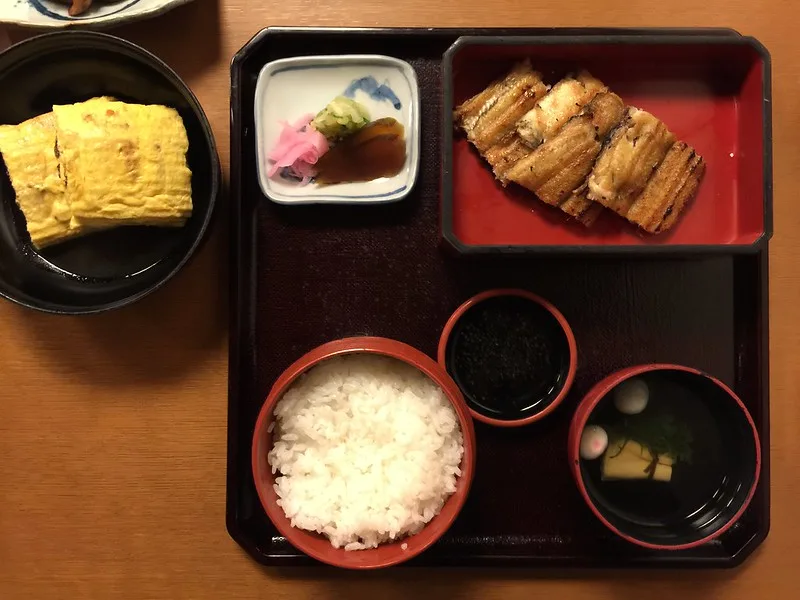
Image credit: Bryan via Flickr CC BY -SA 2.0
No.2: Japanese Osozai dishes
The fresh food section also has “osozai” Japanese side dishes.
These traditional dishes have been prepared for customers to take home and eat for lunch or dinner, accompanied by rice and miso soup.
You’ll find:
- Japanese salads
- Japanese potato salad
- Simmered seaweed salad – Hijiki nimono
- Tamago egg
- Marinated vegetables
- Dried daikon strips – Kiriboshi daikon
- Carrots and cucumbers
- Simmered Japanese vegetables or tofu – Nimono
- Boiled stewed greens
- Japanese pickles – Tsukemono
- Onigiri rice balls
- Other tasty rice dishes
Strangely enough, you won’t have to look far to find a freshly boiled ready-to-eat egg either.
These dishes are packaged in plastic take out containers ready to go.
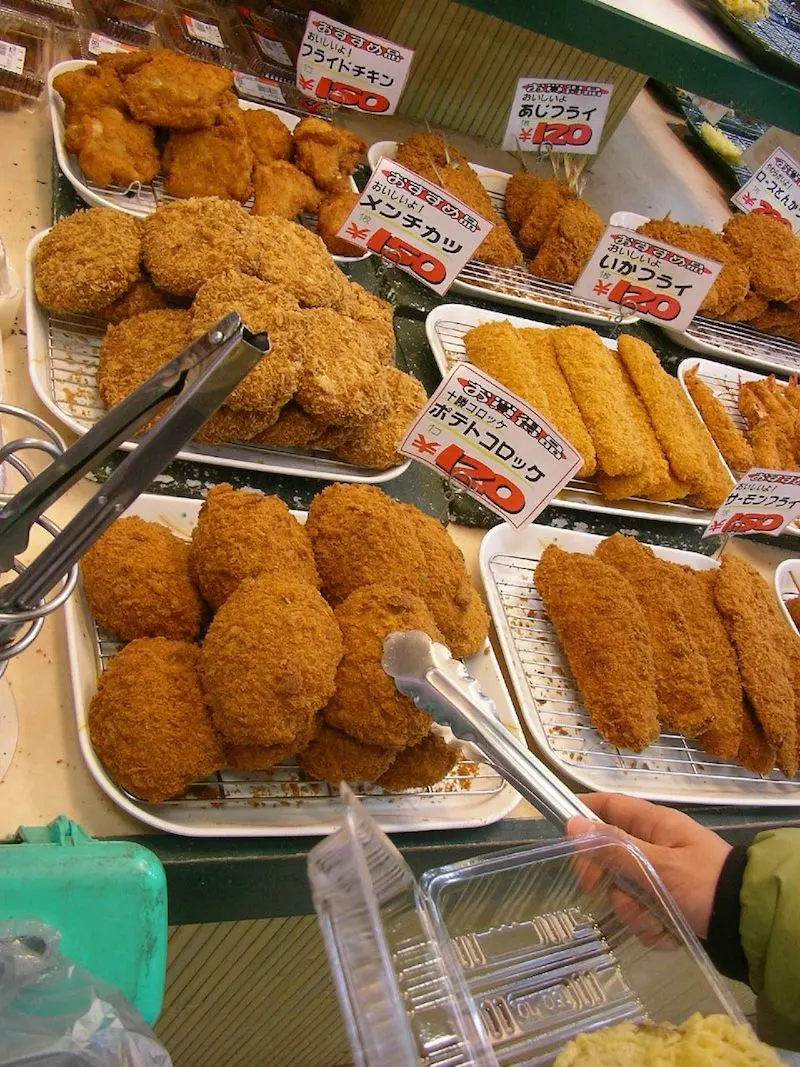
Image credit: Hajime Nakano via Flickr CC BY-2.0
No.3: Best Japanese fried food
For those who want to try it all, head to the Japanese fried foods zone.
Grab yourself a container or bag, and fill it with your favourites.
Adults and kids love:
- the gooey sticky grilled chicken skewers yakitori
- vegetable tempura
- fried fish cakes satsuma-age
- creamy Japanese potato croquettes korokke, and
- Japanese fried chicken karaage.
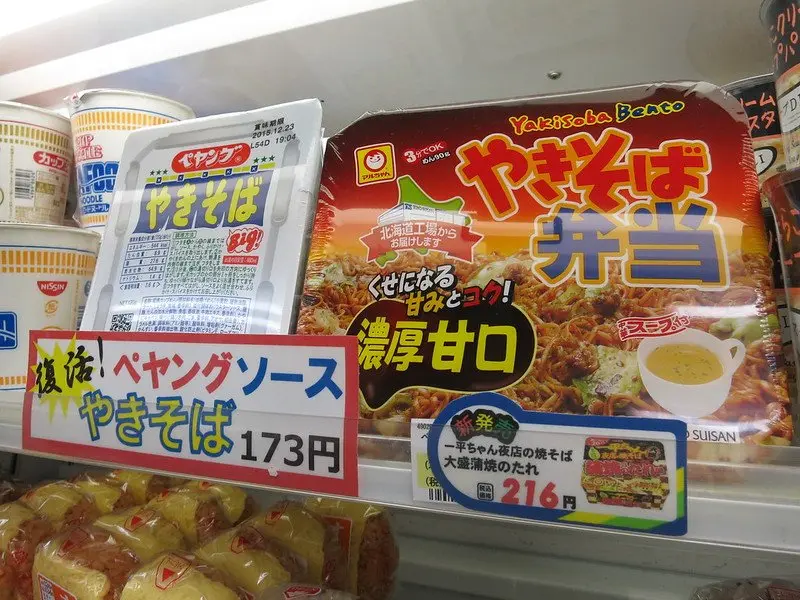
Image credit: Ryo Fukusawa via Flickr CC BY -2.0
No.4: Japanese Ready to Eat meals – Nakashoku and Store-bought Sozai
Ready to go meals offer convenience to busy Japanese families, and also visitors to Japan who want to buy a quick cheap meal to eat in their hotel at the end of a busy, exhausting day of travel fun.
But they are also cheap fresh lunch options wherever we go.
You’ll also find fresh sandwiches, bread and bakery goods.
What’s the best bento or food to get at a combini or supermarket in Japan in terms of value?
My boys love yakisoba, but you really can’t go wrong with these budget Japanese supermarket meals.
RELATED: The Best Japanese Street Food & Japanese Supermarket Snacks to eat on the run
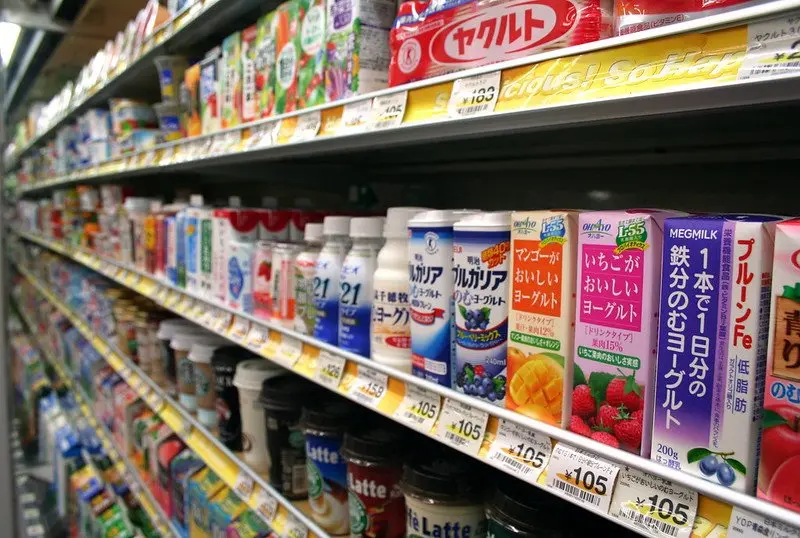
Image credit: Jon Rawlinson via Flickr CC BY -2.0
No.5: The Best Japanese Drinks in a Japanese Supermarket
A Japanese food store has at least one aisle full of Japanese drinks.
We make a pact when we visit Japan to try one new Japanese drink every day, unlike at home where we mostly drink water, milk or tea.
Japanese drinks are a novelty, full of unique flavours and bottle shapes.
(One brand of soda drinks in Japan, Ramune, has a marble in the bottle to keep the carbonated fizz fresh in the drink)
If you thought a Japanese drink was cheap in a vending machine in Tokyo, you’ll be shocked at the price in a supermarket.
They are even cheaper!
(I have NO idea how convenience stores in Australia and elsewhere charge $3.50 to $5 a drink. It’s highway robbery.)
RELATED: Best Japanese drinks to try in Japan
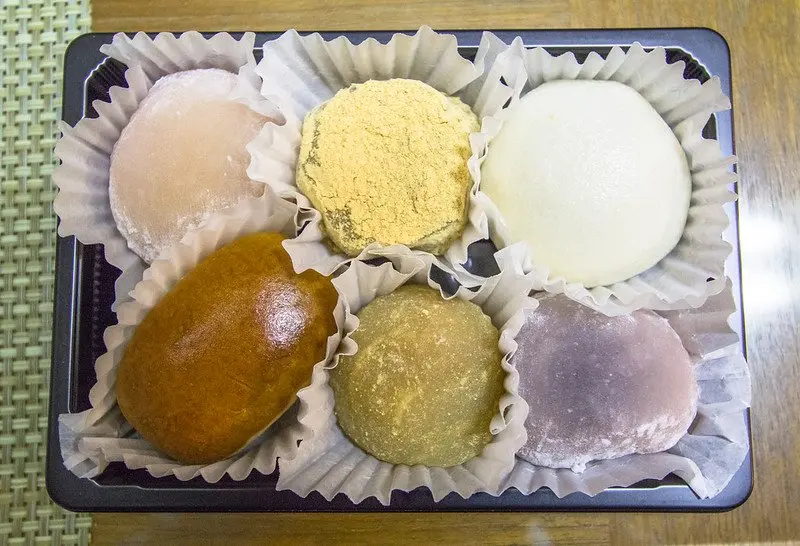
Image credit: SStrieu via Flickr CC BY -ND 2.0
No.6: Best Japanese sweets
A Japanese grocery store is the place to go if you want to buy Japanese food souvenirs from Japan in bulk.
It’s much cheaper to buy Japanese snacks and Japanese candy in a Japanese supermarket than a convenience store in Japan.
It’s worth the time to find one.
The selection of Japanese snacks and candy in a supermarket is mind blowing!
No.1: Daifuku Mochi
Don’t leave without trying my favourite sticky rice dessert from Japan.
These mochi rice treats (also called daifuku) are usually filled with sweet red bean made from azuki beans.
Daifuku is a popular ‘Wagashi’ sweet in Japan.
If you visit a Japanese tea ceremony, it’s likely you’ll be served daifuku as an accompaniment to sweeten up the bitter matcha tea.
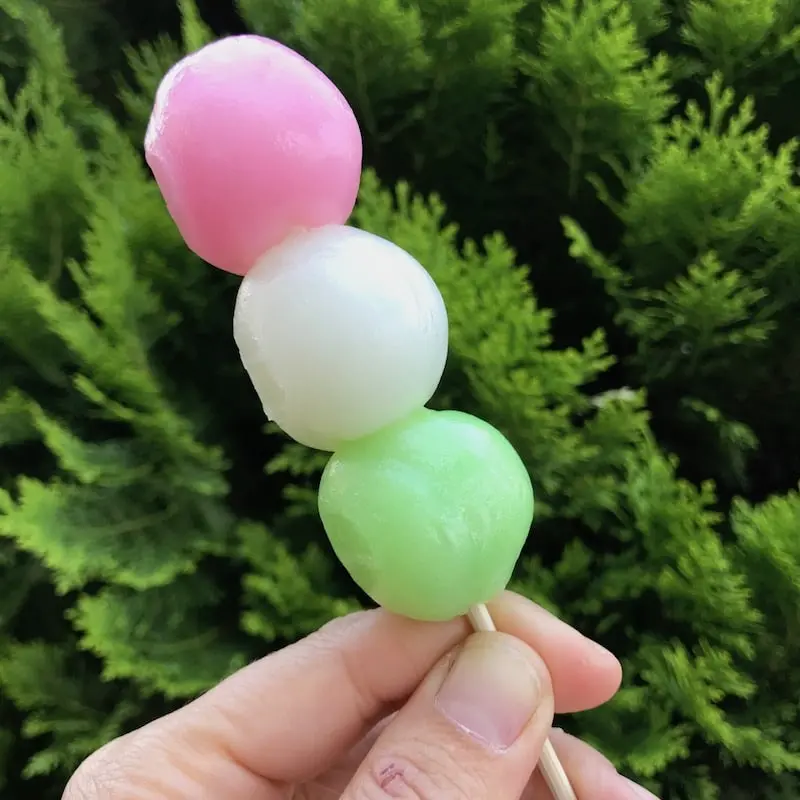
No.2: Dango in Japan
Dango is another version of mochi on a stick, usually three balls in pink, white and green.
No.3: Popular Japanese Candy
Be sure to try Japanese milky candy.
Look for the smiling girl on the pack (as pictured above)
Start a collection of Japanese sweets to try. The packaging is pretty but they taste good too.
RELATED: Best Japanese Candy Guide
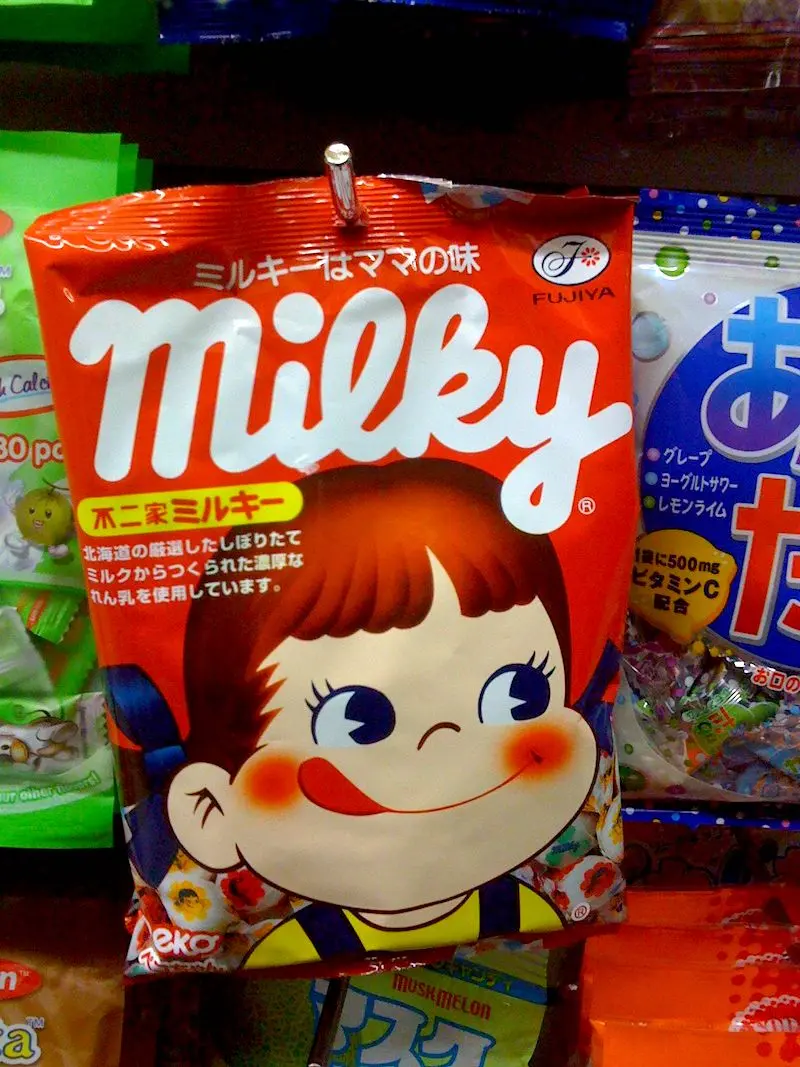
Image credit: Meghan Newell via Flickr CC BY -SA 2.0
No.7: Best Japanese Supermarket Food Souvenirs
No.1: Japanese chocolate
You can also buy all the famous food souvenirs in Japan, like Japanese chocolate snacks, for about 2/3 of the price elsewhere:
- Green Tea Kit Kats
- Pocky Chocolate Sticks in all the different flavors
- LOTTE Crunky chocolate
- Meiji THE chocolate bars
We take home a special bar of Japanese chocolate for the boys’ teachers to enjoy at the end of a long, loud day too!
Check out this guide to the best Japanese chocolate in Japan.
(It’s a whopper of a read!)
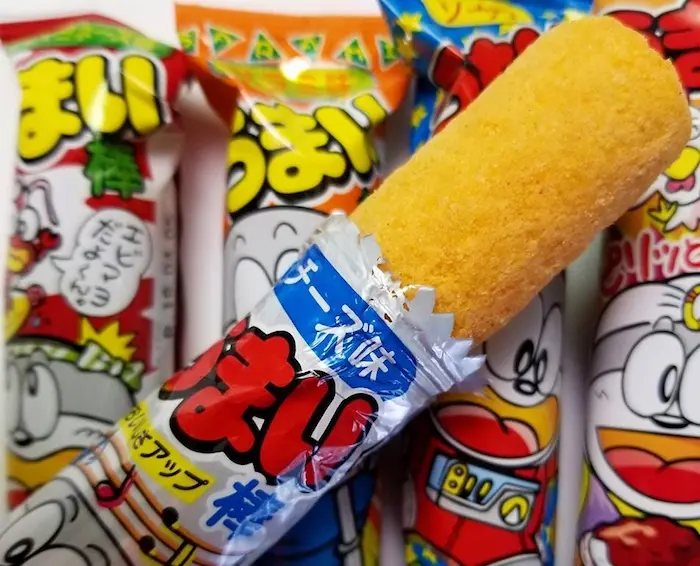
No.8: Best Japanese Snacks from Supermarket
No.1: Dagashi snacks
Wondering what to buy from Japanese supermarket for cheap souvenirs?
We buy a big bag or two of cheap Japanese Dagashi snacks such as the popular Umaibo corn snacks, and give these to each boys’ class teacher to share out among the kids.
It’s a fun and tasty way to share a bit of Japanese culture with kids back home and the best price for bulk buys is in a Japenese supermarket.
Our tip: Buy at least three extra bags of Japanese snacks than you were planning to.
We bet you’ll have forgotten someone on your gift list, just like we’ve done in the past.
If you haven’t, it’s a bonus.
You’ll be happy you have this extra stash of Japanese treats to eat when you are feeling homesick for this gorgeous country.
RELATED: Best Japanese Snacks to buy!
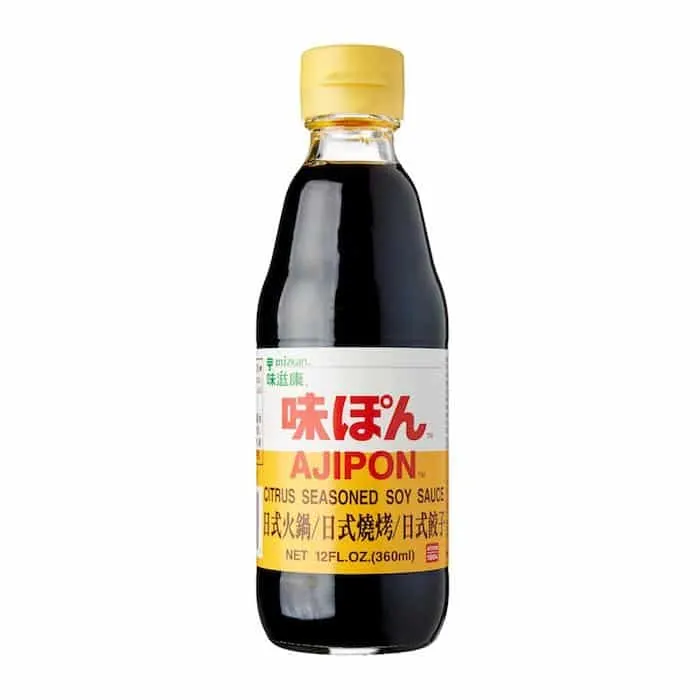
WHAT TO BUY AT A JAPANESE GROCERY STORE GUIDE
What should you buy when you go grocery shopping in Japan?
What to buy in a Japanese market is a question a lot of people ask.
There’s so many things to buy in a Japan supermarket that if you go in blind, it can be overwhelming.
Best Japanese grocery shopping list!
Here’s THE guide to traditional Japanese food items we don’t leave Japan without, so we can make authentic Japanese food at home.
You can use this guide of Japanese ingredients to determine what to buy in Japanese supermarkets, AND what to leave behind!
(NB: Japanese food labels are a bit tricky. You might try Google translate to work out the Japanese language if you have a particular food allery or dislike.)
Search for some Japanese food recipes, follow our list of the best things to buy at a Japanese market, and start cooking!
Image credit: Steven Miller via Flickr CC BY -2.0
SEASONAL FOOD IN A JAPANESE STORE
We like to do a price comparison on the items in the fruit, vegetables, dairy products, meat and fish sections of a supermarket to see if things are cheaper, or more expensive than home.
It’s eye-opening for the kids to see this kind of stuff.
It helps kids not take the abundance of meat and fresh seasonal fruit we have at home for granted.
The other place we spend considerable time is the seasonal food aisle.
This section changes regularly, providing the food and ingredients necessary for the food that Japanese people prepare and eat at Japanese festivals.
Depending on when visit a Japanese food shop , you will seasonal food ingredients for different festivals.
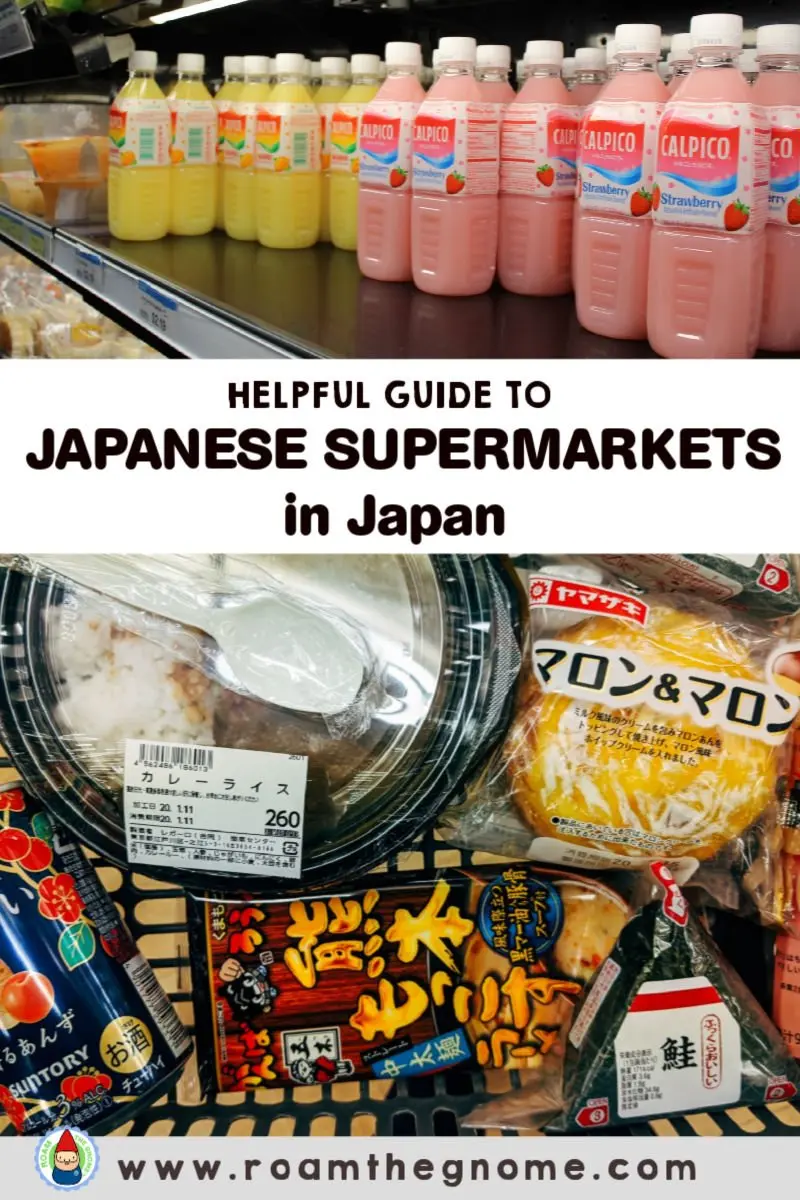
No.1: Popular New Year food in Japan
Wondering what to buy at Japanese market at New Year?
Look for these:
- Our favourite mochi rice cakes
- The candied chestnuts & sweet potato dish Kuri Kinton
- Toshikoshi soba noodles
- Ozouni soup
- Osechi bento box filled with black beans, prawns/shrimp, konbu seaweed dish, and datemaki rolled egg omelette.
Image credit: Katorisi via Wikipedia CC BY-3.0
No.2: How do Japanese celebrate their Children’s Day?
The best things to buy at Japanese market for Japan Children’s Day or Boys Day include:
- Tri-colored kushi dango (sweet sticky mochi on a stick)
- Special seasonal wagashi sweets for Kodomo no Hi Children’s Day
- chimaki rice cake (Japanese dumpling) made out of steamed sticky rice, wrapped in bamboo or reed, and steamed
- kashiwa mochi – white Japanese rice cake with red bean paste filling wrapped in a leaf. Also called mochi gome rice balls
These things are all popular food for Kodomo no Hi Children’s Day.
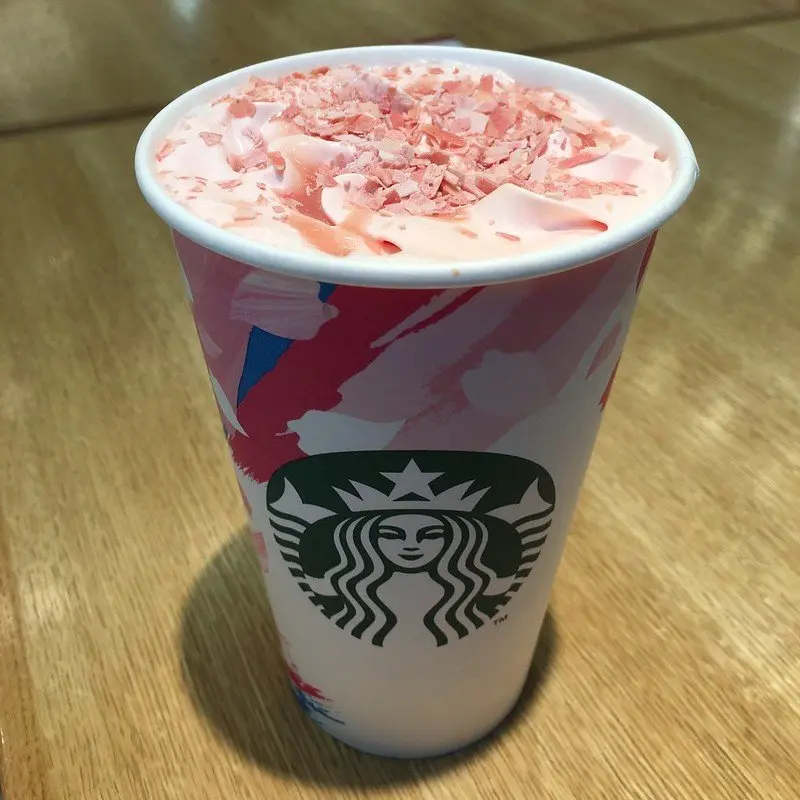
Image credit: Bryan via Flickr CC BY -SA 2.0
No.3: Popular Japanese Sakura Festival Food
Wondering what to buy in Japanese grocery store for Cherry Blossom season?
The best food for Sakura Cherry Blossom viewing and park picnics can be found below:
- Hanami dango dumplings
- Cherry blossom cookies
- Sakura mochi
- Cherry blossom rice balls
- Hot matcha green tea
- Chirashi sushi rice bowl dish and
- Inari sushi pockets
Even Starbucks coffee shop in Japan does a range of limited edition Sakura drinks!
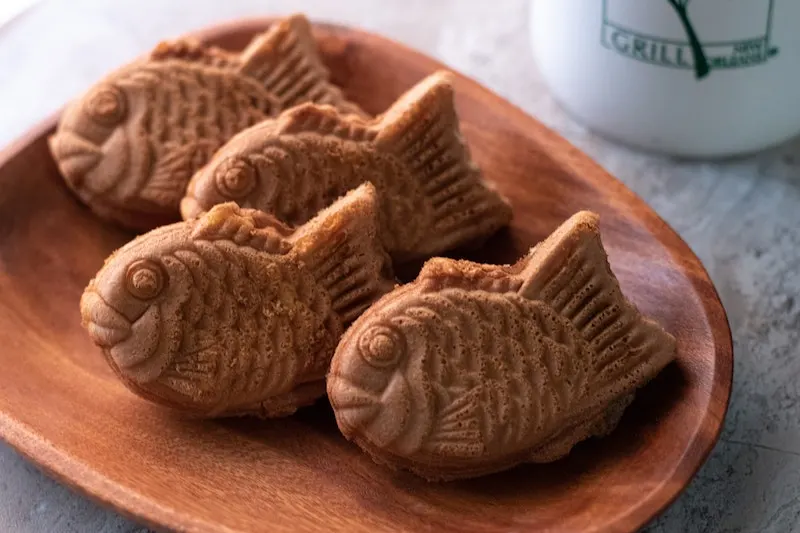
Image credit: Kelly Visel via Unsplash
No.4: Popular food for Golden Week in Japan
Wondering what to get at Japanese market for Golden Week treats?
Try:
- Ikayaki grilled squid on a stick, or
- Taiyaki fried dough in a fish shape, filled with sweet red bean
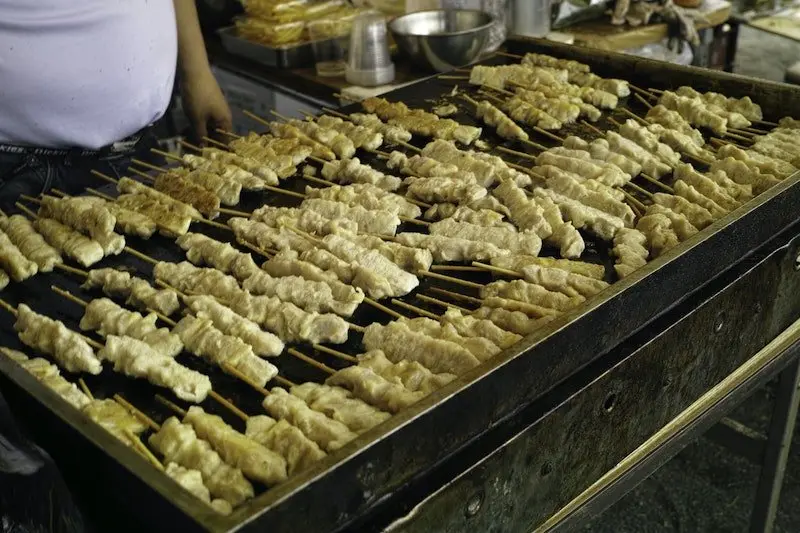
Image credit: Magic Mary via Unsplash
No.5: Popular food for Tanabata Star Festival
Wondering what to buy at a Japanese market for Tanabata festival?
The Tanabata Star festival is a gastronomical feast.
The best Japanese grocery items to buy include:
- Takoyaki octopus balls
- Yakisoba noodles with pork and cabbage
- Okonomiyaki savory pancakes and
- Yakitori chicken skewers.
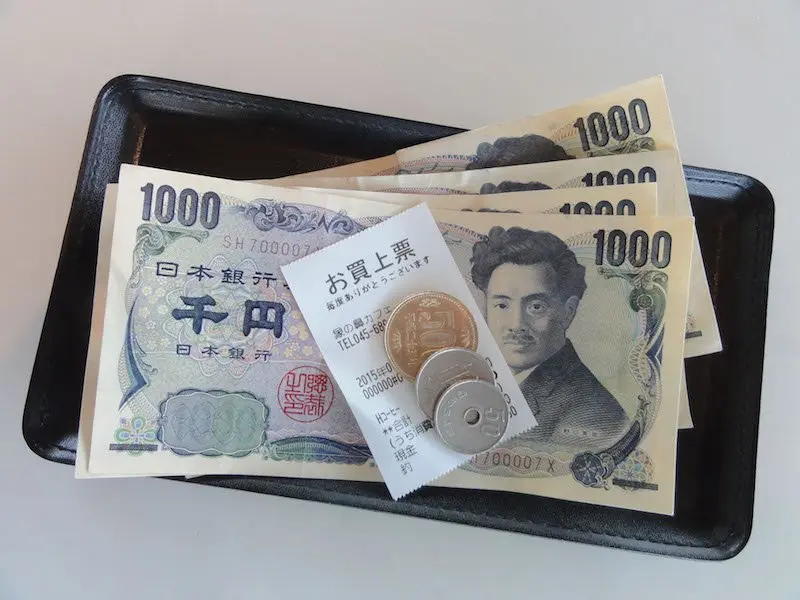
Image credit: Source Unknown CC BY-1.0
How to Pay at a Japanese Grocery Store
When you’ve finished your grocery shopping at a Japanese food shop, head to the tills at the exit.
Put your basket on the countertop for the cashier to do his or her job.
They’ll transfer the groceries to a second basket.
You are expected to pack your own groceries, unlike many other countries.
I see this as an opportunity to build community, friendship and good will with other human beings.
It’s like the staff member and myself are on the same team, helping one another out instead of them working for me.
It’s nice.
Pay by credit cards or cash at most city or regional supermarkets in Japan.
If you are paying with cash, do remember to put your money on the tray when it is offered, rather than hand your notes and coins to the cashier when it’s time to pay.
This is seen as bad manners.
Follow the lead of the person in front of you.
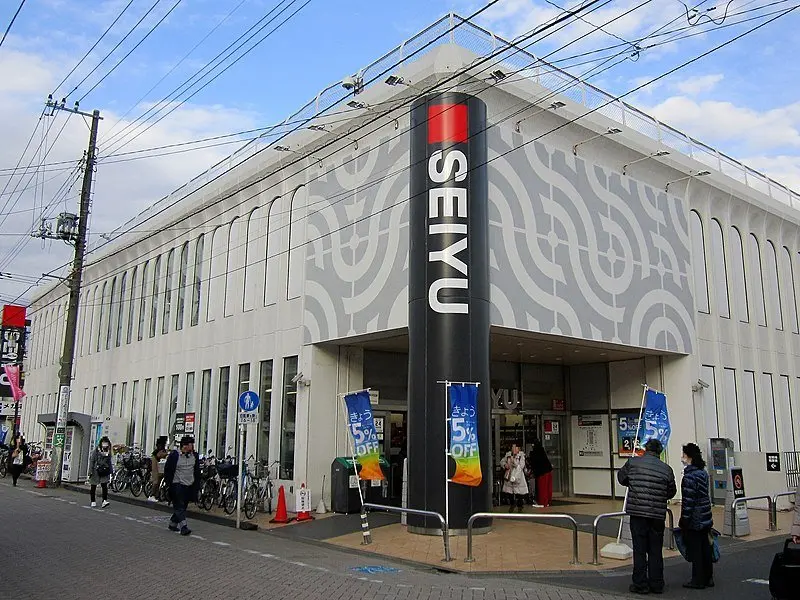
Image credit: Suikotai via Wikimedia CC BY SA-4.0
THE BEST JAPANESE SUPERMARKET CHAINS
The best Japan supermarkets are the ones closest to you!
It’s that simple.
Every Japanese supermarket chain is similar in nature, although size may vary.
If you want to know where to buy Japanese food products and go grocery shopping in Tokyo, search for these famous Japanese supermarket chains in your area.
Type the name and your location into Google maps, and wait for directions.
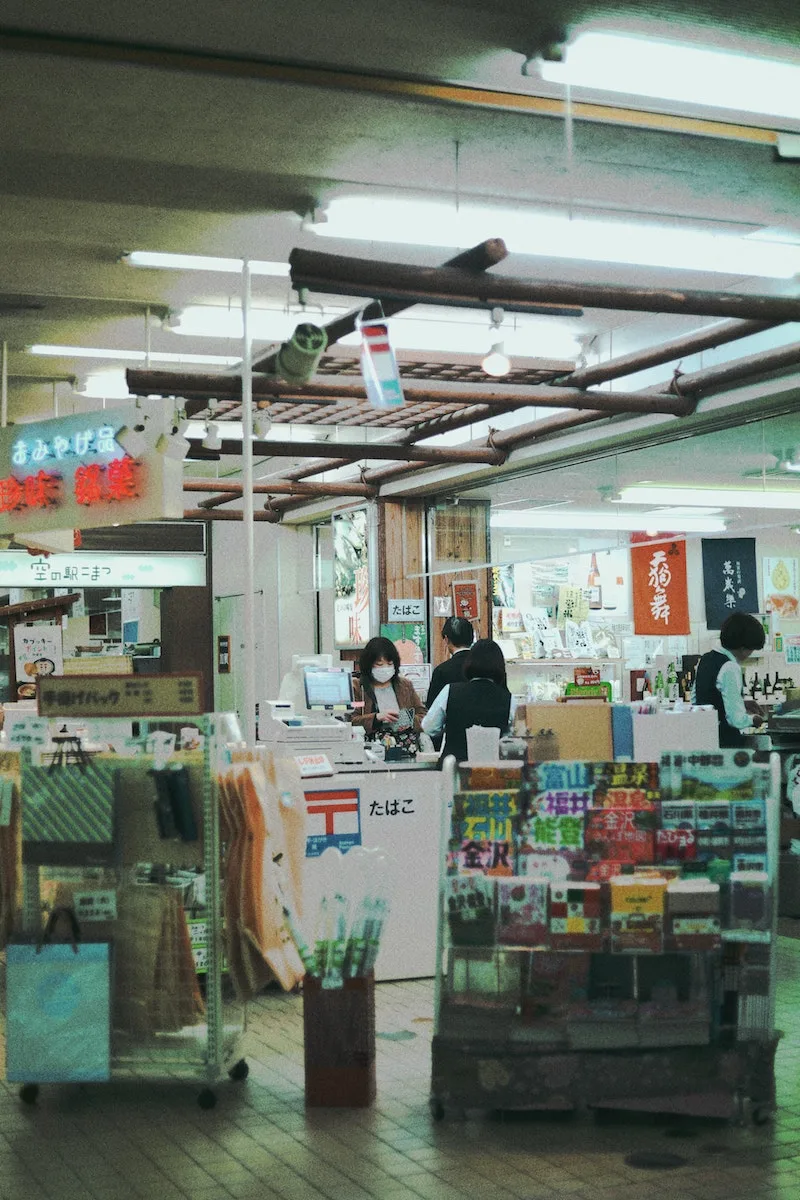
Image credit: Poppy Lin via Unsplash
No.1: Supermarkets in Tokyo
Start with this epic guide to finding Tokyo Supermarkets
It lists the best big supermarket in Tokyo and also our favourite cheap supermarket in Tokyo, plus a list of supermarket chains in Japan.
This list of supermarkets in Japan includes OK Supermarket Tokyo.
Find the best supermarket in Tokyo near you too!
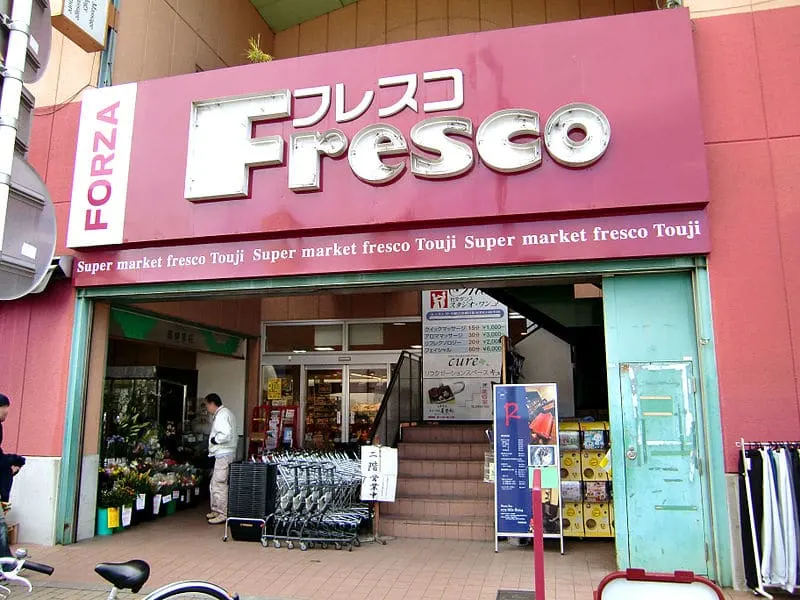
Image credit: Whity via Wikimedia CC BY GNU free
No.2: Best Supermarket in Japan countryside?
You might not need a Tokyo grocery store but you may need a Japanese supermarket in Japan somewhere else.
Check out this list of supermarkets in Japan.
Supermarkets in Osaka
Click here for a round up: Ito Yokado in Osaka
You’ll find a wide range of Japanese supermarket chains, both big and small in Osaka.
This is where you’ll find budget Japanese kitchen essentials and good Japanese ingredients for nabe pots like sukiyaki, and shabu shabu.
Supermarkets in Kyoto
Click here for a round up: Best Kyoto supermarket
Fresco, Aeon, Life and Seijo Ishii all have supermarkets in the main shopping area of Kyoto.
Supermarkets in Hiroshima
Click here for a round up of Hiroshima supermarkets
Fresta and Yours are two of the main supermarkets in Hiroshima.
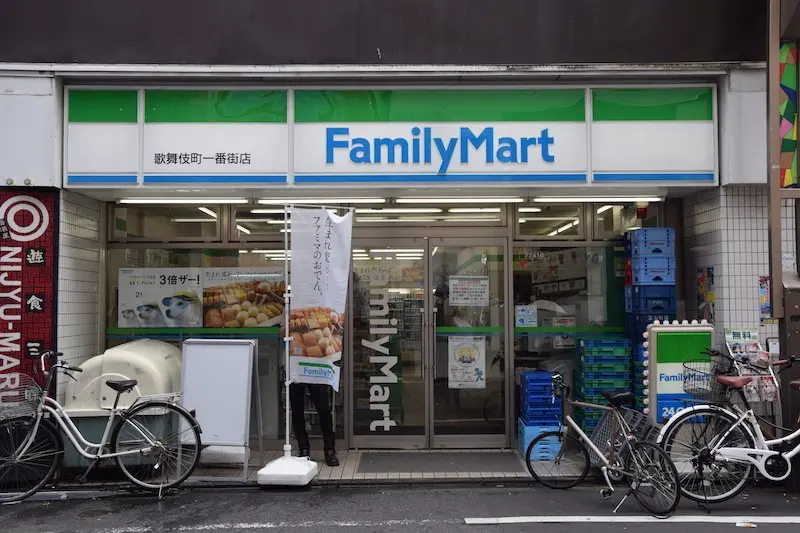
No.3: Convenience Stores in Japan
Convenience stores are not really a supermarket but a close second.
A Japanese convenience store, or konbini as they are known, are the best small grocery stores in Tokyo.
Our favourite is Family Mart because of the range of excellent budget friendly food to eat.
Take a look at what you can find in Family Mart here.

Looking for More Shopping in Tokyo?
Click the links in blue below for more Tokyo tips.

